How to unclog a yard drain – expert tips for unblocking all 5 types without the need of specialist equipment
Blocked yard drains can cause all sorts of problems, but almost every type can be unclogged with common household tools

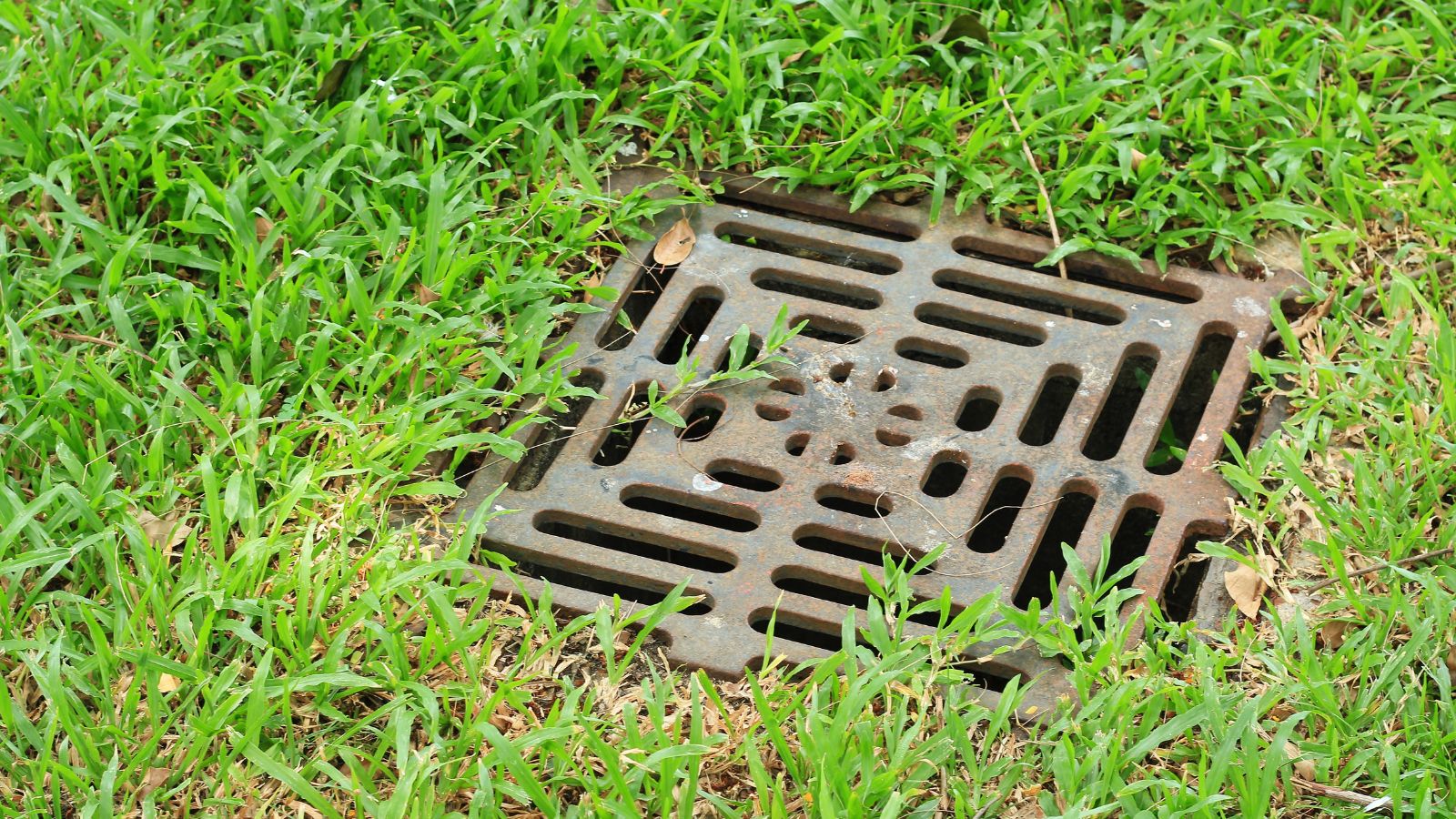
Good drainage is an essential part of every garden, but even the best-laid drains can clog up with debris.
If you're new to gardening or fear plumbing DIY, you might not want to touch your drainage systems for fear of breaking them and causing costly damage.
Thankfully, almost every type of drain is easy to unclog yourself. From catch brains to French drains, here's all you need to know about unclogging the most common types of yard drain.
1. How to unclog a catch basin

When most people refer to a 'yard drain' they mean a catch basin. DIY expert and Homes & Gardens writer Chiana Dickson explains that 'Catch basins can be found in lawns, but they're most commonly used under downspouts on patios or driveways. Catch basins 'catch' rainwater and slowly release it into pipes to prevent water systems from being overloaded with too much liquid at once.'
Thankfully, catch basins are one of the easier drains to unclog. You can usually fix them in a single step, though it can be a little gross. Remove the grate, then scoop out any debris. It's usually something so small that you can fish it out with your fingers. For bigger debris like leaves, you may have to use a hand tool like a trowel or potato scoop to remove the debris. This is usually all you have to do.
Then, run a hose over the drain to wash away any lingering debris. This will also show you if there's a block further down the pipe. If there is, you need to use a drain snake like this from Amazon to unclog the blockage, but this is simple. Just push the snake along the pipe until you meet resistance, then push against the blockage until it either breaks apart or hooks on the end of the snake - then you can either pull it of the drain or push the broken debris down the pipe.

Chiana is a content editor at Homes & Gardens covering DIY, decluttering, cleaning, and tidying tips – many of which she tests and reviews herself in her own home to ensure they will consistently deliver for our readers.
2. How to unclog a trench drain
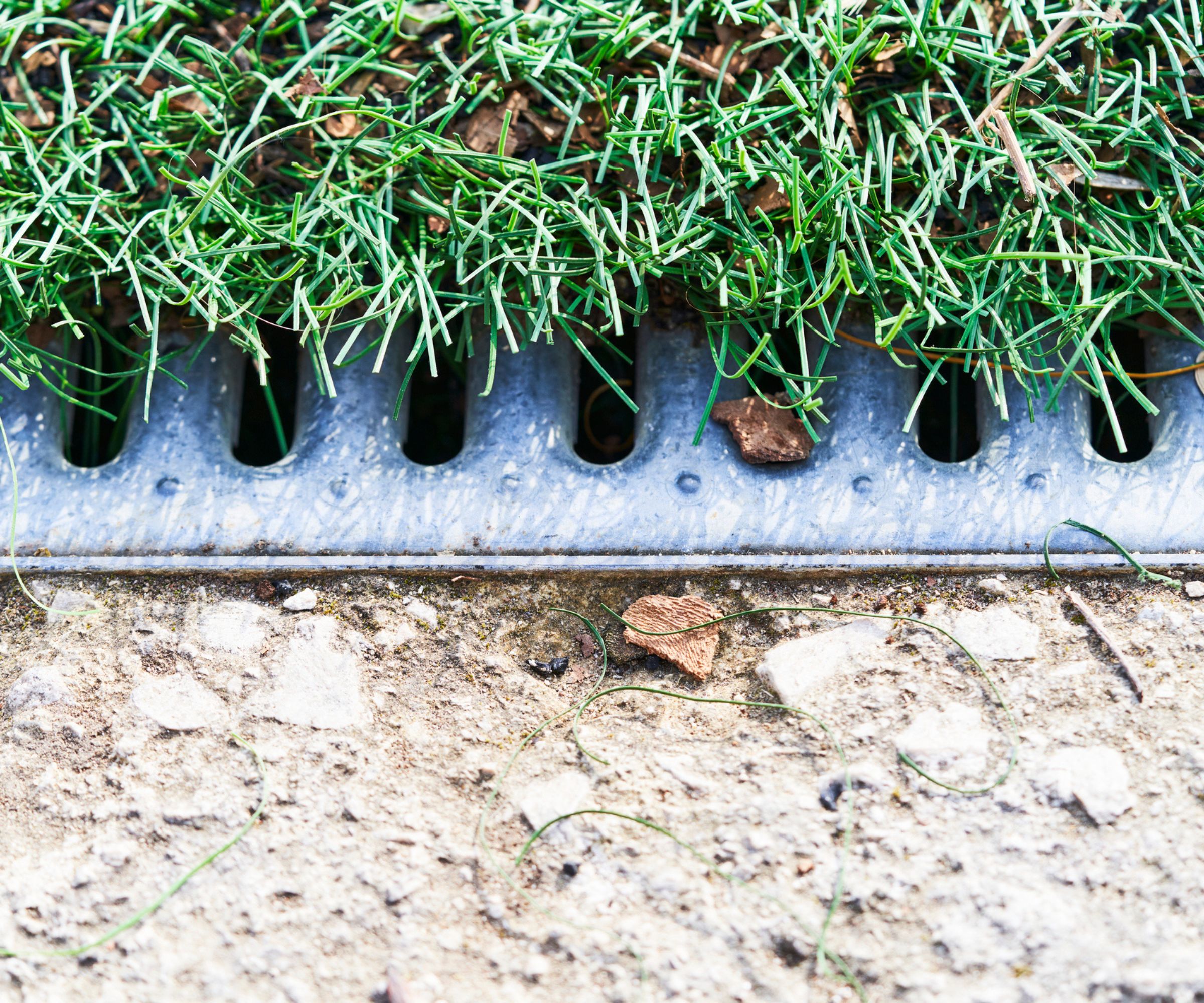
Trench drains are another common drain. They're usually used on patios or the boundary between a patio and lawn. They're exactly as they sound - a trench covered with a grate. Thankfully, these are also easy to unclog.
Design expertise in your inbox – from inspiring decorating ideas and beautiful celebrity homes to practical gardening advice and shopping round-ups.
Just like a catch drain, you need to remove the grate and remove any debris by hand. It's a straightforward process, but unlike a catch drain, it can take a while. If you have 50 feet of trench drain to clear you'll find that going along the entire length with a trowel or trench shovel is a little tedious. However, it isn't a hard job. Just like with a catch drain, once the worst of the debris is removed, flush the trench with a garden hose to remove any lingering particles of leaves or mud.
If there is anything you can't remove by hand, you need to use a pressure washer to blast it out of the trench - a plumbing snake probably won't work because the cable will extend out the open trench rather than push against the debris.
3. How to unclog a swale
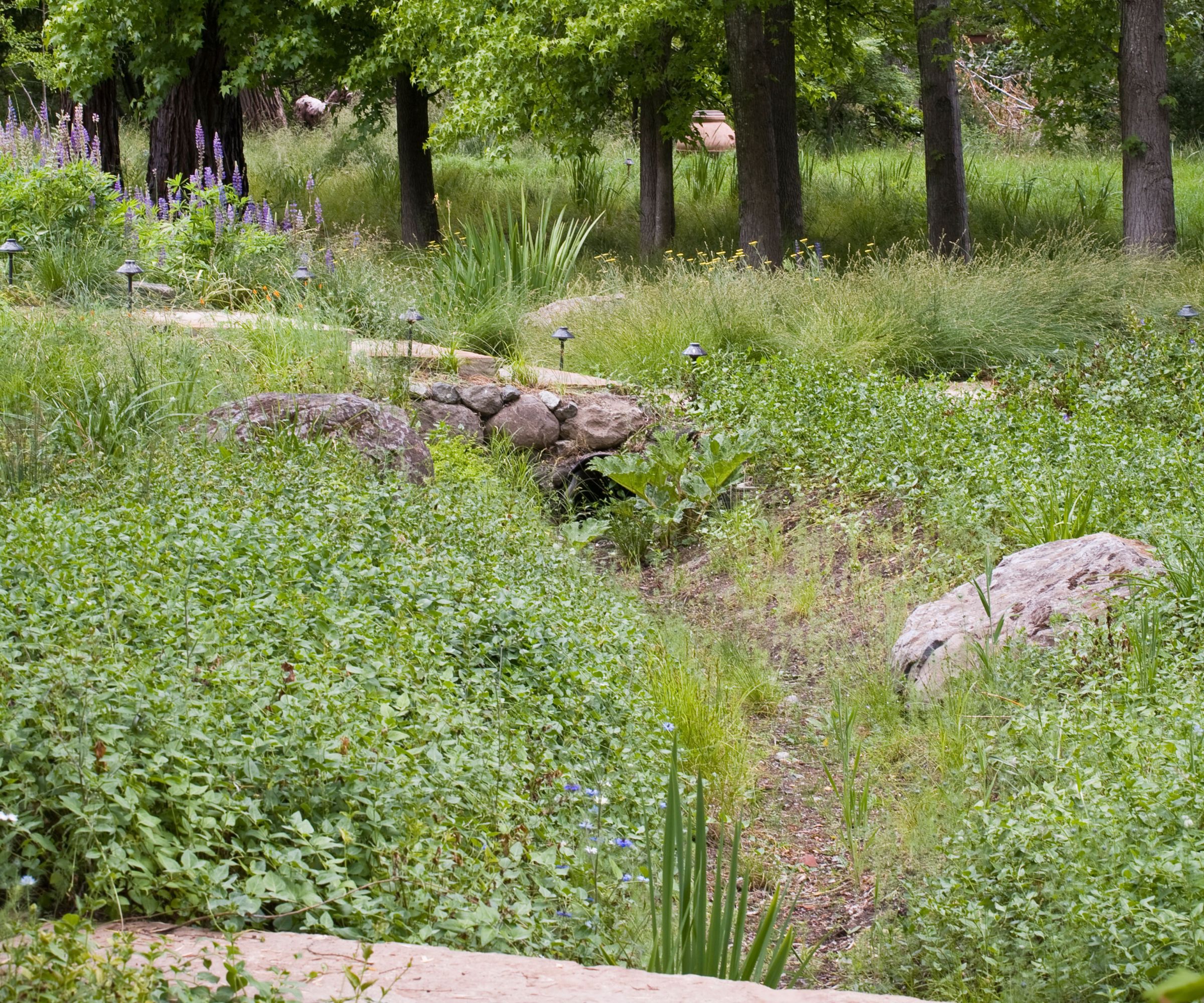
Swales are simple to unclog. In fact, most swales don't even have drains. Swales are wide, shallow depressions dug into a yard to collect water runoff. They're relatively uncommon in yards; you usually see them along the side of roads or pavements in residential areas. They direct water down their gentle slopes into a boggy ditch separate from the rest of the lawn, containing standing water in one area, usually planted with water-loving grasses or trees.
This means that the vast majority of swales don't even have drains, but a few do. At most, you'll see a a catch basin at the end of the swale, or a little run of pipe to another area of the yard to help deal with the worst rainfall. This makes them easy to unclog; you other follow the same method as with the catch basin above, removing debris by hand. At worst you need to run a drain snake through the end, but they usually have no more than a couple of feet of pipe, so it's usually a simple fix.
4. How to unclog a French drain
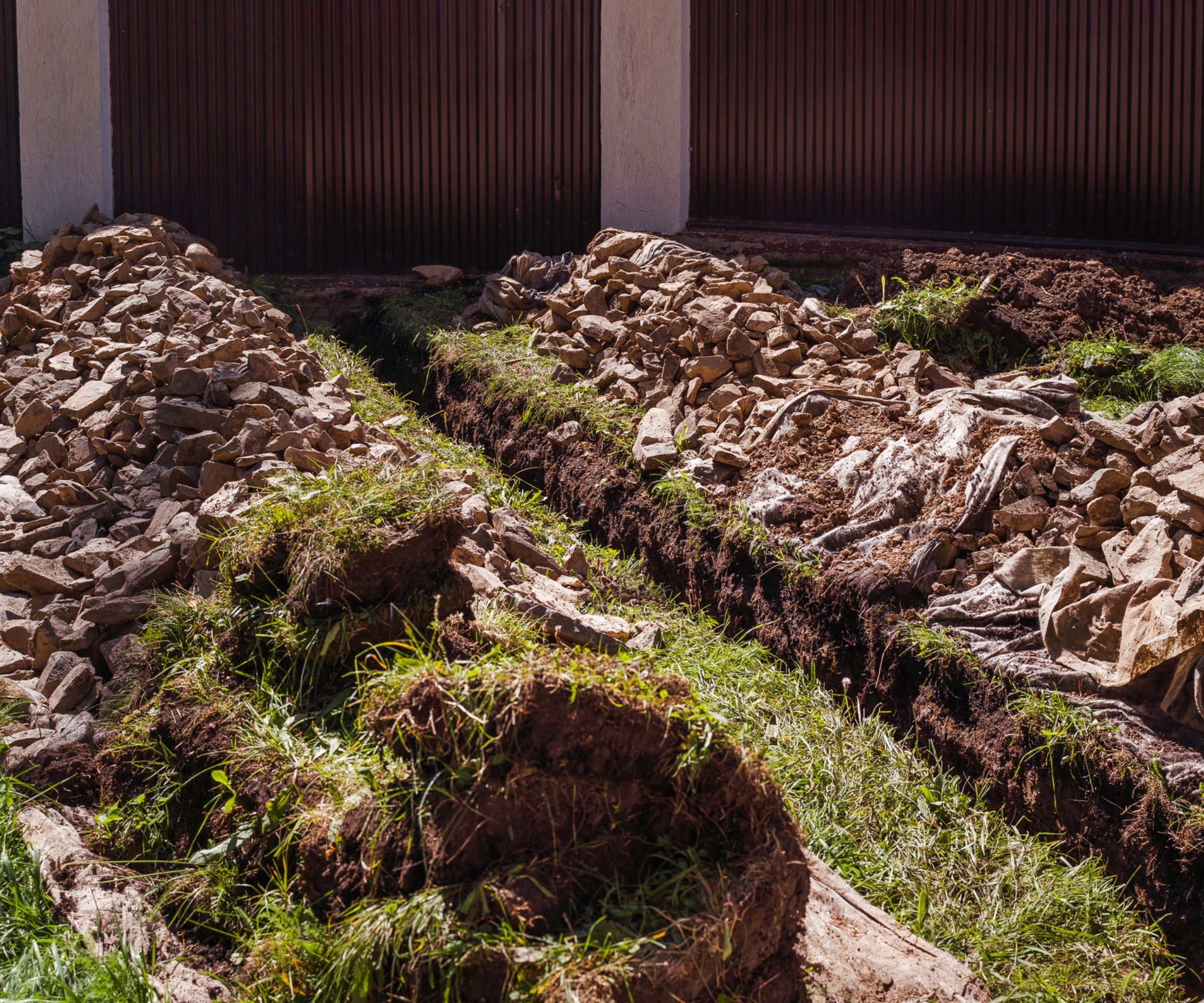
French drains are where clogs start to become more difficult. You can tell a clogged French drain because you'll see water pooling on your lawn Unlike the other drains mentioned so far, a French drain is hidden underground, which makes it much harder to clean. However, the process is similar to the other drains we've covered.
First, clear any visible debris away from any of the access points to your drain or along its length. Sometimes the problem is as obvious as mud blocking a grate by a catch basin or a drainage ditch at the end of the pipe. If this doesn't solve the issue, take a pressure washer and blast it through the drain at the uphill access point. This torrent of water usually removes blockages, but there are times when this won't work.
If the above steps haven't worked, you need a sewer snake. These tend to be slightly longer and tougher than indoor drain snakes, so they're perfect for running the length of a French drain. You can use a manual sewer snake like this from Amazon, but you might find it a lot easier on your hands to use a large electric drain snake like this from Home Depot. Depending on where you are in the country it may be more cost-effective to rent one of these, too.
Just as with the other drains, push the sewer snake down the French drain and remove any clogs, then test the drain by running water down the drain. You should also see standing water on your lawn begin to subside.
5. How to unclog a dry well
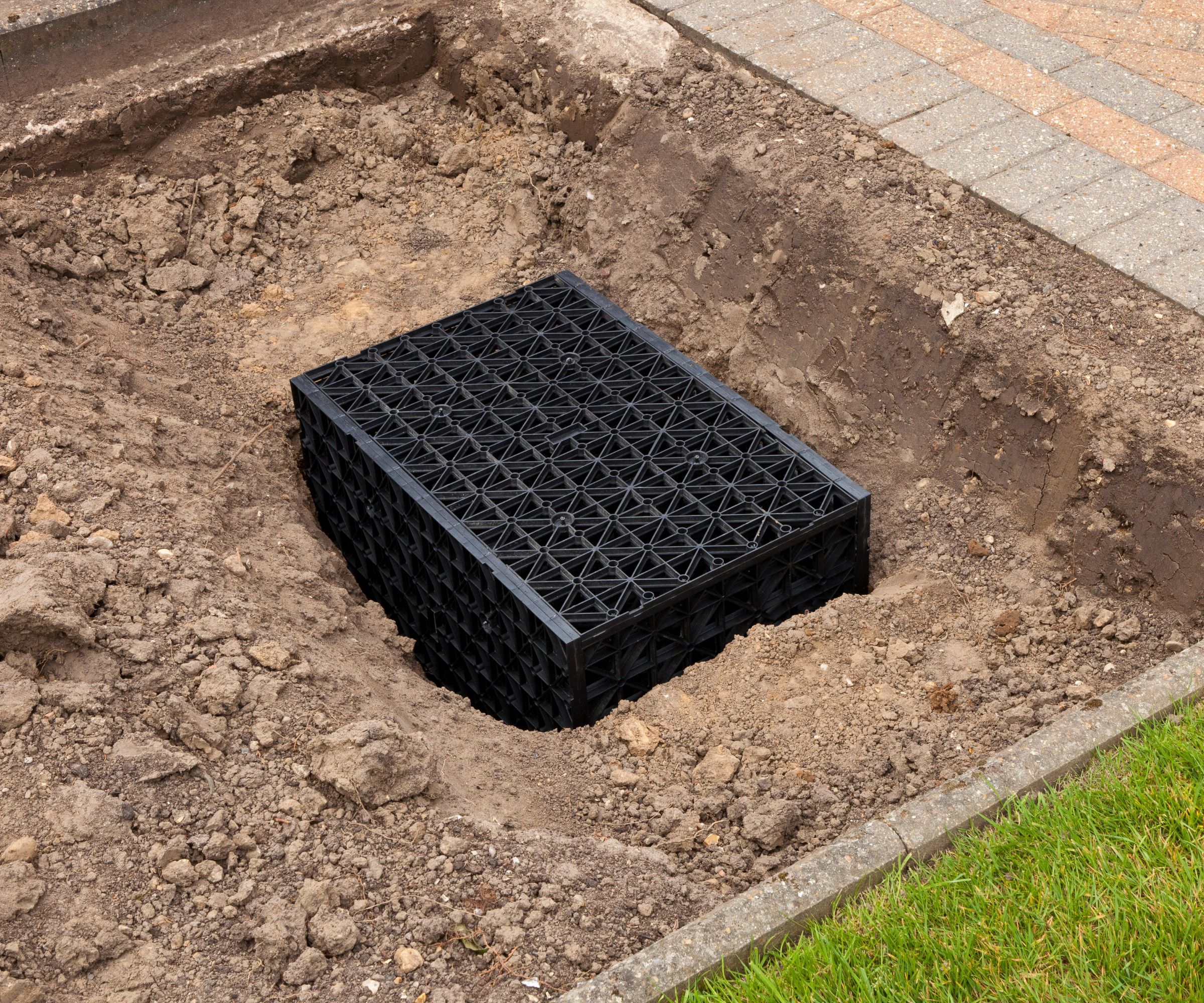
The final type of clog to consider is in a dry well, and like a French drain, these can be more difficult to solve. Also known as a soakaway, a dry well is like a large, vertical French drain. It slowly releases rainwater into your soil through a huge container of filters and rocks, helping to prevent erosion and maintain a normal level of hydration. They also help to prevent subsidence.
But this means that they are very hard to unclog. There's one clog here that's relatively easy to fix. Most dry wells are connected to an overflow spout - it's designed to give rainwater another outlet in the worst storms. However, if you notice that the overflow kicks in for any rainfall, even light rainfall, then you have a clog in the downspout that needs to be fixed. This can be solved with all the techniques above. You can flush the downspout with a hose or use a plumbing snake to remove any blockages.
However, if there's standing water around your dry well or no blockage in the downspout, you need to try a wet/dry vacuum. Plumbing snakes don't work in dry wells because the well is filled with rocks - there's nowhere to push any debris to, and no end to wash it away to because the water slowly filters through rocks into soil. That means putting a wet/dry vac down into the dry well and trying to suck up any debris.
Unfortunately, that isn't always successful, and if you can't remove the debris with the methods above then you need to dig up the whole well to check the pipes, filter fabric and rocks to ensure that everything is working as it should. That can be a lot of work, and if you aren't a fan of DIY, it can be expensive.
FAQs
Do dry creek beds clog?
Dry creek beds are another common drainage solution. Water can run slowly in a dry creek bed but they don't 'clog' in the way drains with pipes do. All you need to do to ensure a dry creek bed is working as it should is to remove any large amounts of leaves or other yard debris that might slow down water. However, in the stormiest parts of the country, a dry creek bed may not help much, so you might need to swap it out for a different drainage solution.
Clogs happen naturally, but there are some steps you can take to prevent them. Learning about the most common French drain mistakes will ensure a smooth-running French drain that solves any issues with standing water.

As a gardens and lifestyle contributor, Alex makes sure readers find the right information to help them make the best purchase. Alex got his start in reviewing at the iconic Good Housekeeping Institute, testing a wide range of household products and appliances. He then moved to BBC Gardeners’ World Magazine, assessing gardening tools, machinery, and wildlife products.